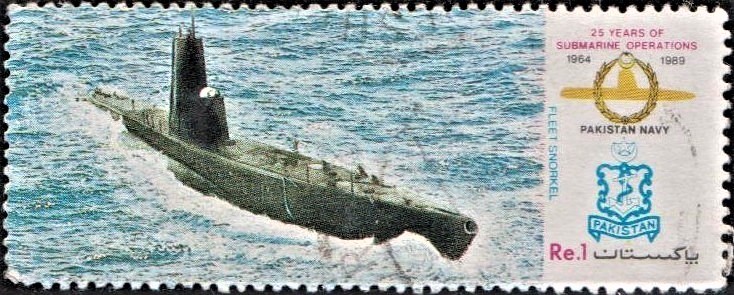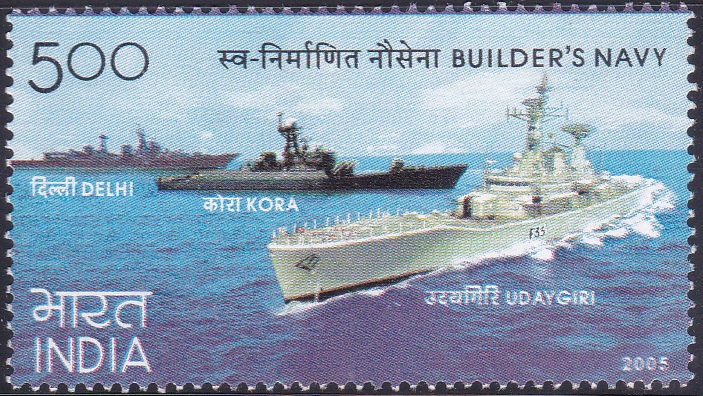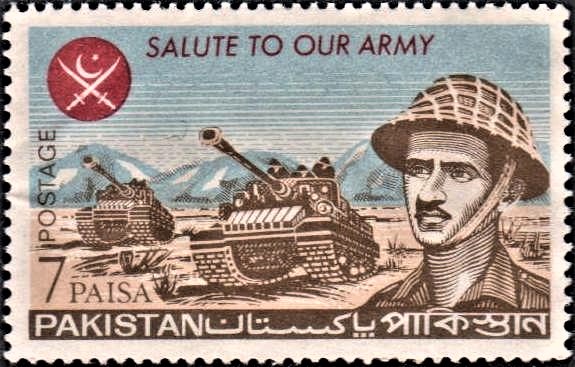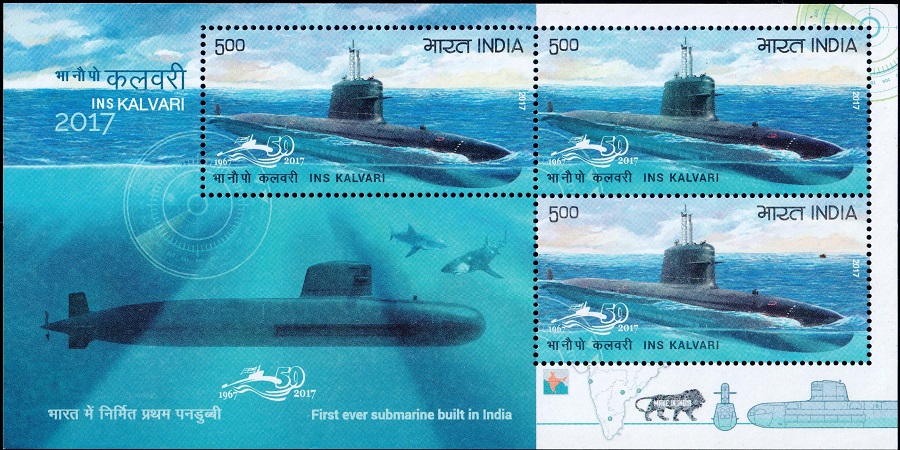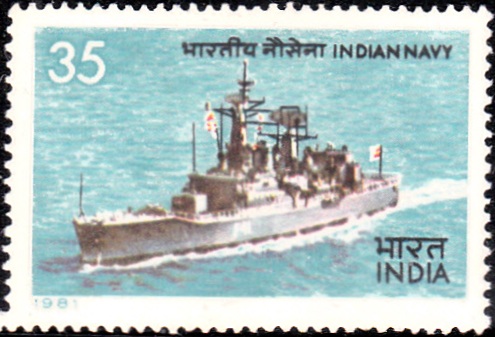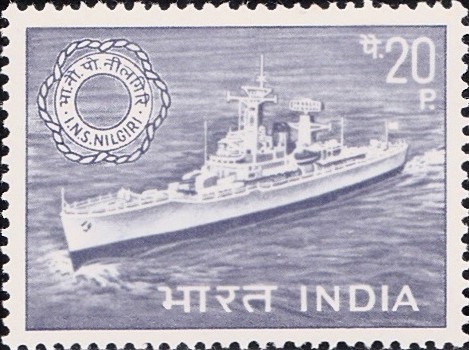
I.N.S. Nilgiri : Navy Day 1968
A commemorative postage stamp on INS Nilgiri : Indian Navy Day 1968 :
 Issued by India
Issued by India
Issued on Dec 15, 1968
Issued for : The P. & T. Department joins the nation in congratulating the Navy on its achievements by issuing a special postage stamp on Navy Day, 1968.
Description of Design : The design of the stamp is horizontal and depicts a picture of the new frigate I.N.S. “NILGIRI” which has been launched by Prime Minister recently.
Type : Stamp, Mint Condition
Colour : Blue Grey
Denomination : 20 Paise
Overall Size : 3.91 X 2.40 cms.
Printing Size : 3.56 X 2.54 cms.
Perforation : 13 x 13
Watermark : Printed on unwatermarked paper
Number Printed : 30,00,000
Number per issue Sheet : 35
Printing Process : Photogravure
Designed and Printed at : India Security Press
About :
- The most important landmark in the maritime history of our country is undoubtedly the launching of the first major warship, the frigate I.N.S. “Nilgiri“, by the Prime Minister on 23rd October, 1968 at Bombay. This frigate, which is being built by Mazagon Dock, Ltd., is one of the most modern warships of its type and belongs to the latest series of Leander class frigates. In this, we are keeping abreast of the British since the first ship of this series is expected to be commissioned in their Navy only in 1969.
- The “Nilgiri”, which will be followed by two more Leander class frigates, is a versatile ship with anti-submarine and anti-aircraft capability. She is equipped with sophisticated weapon systems including Seacat guided missiles and a helicopter for anti-submarine and reconnaissance duties. The ship is being fitted with the latest fire control and electronic systems and several other complex items of equipment. After extensive trials, she will be commissioned into the Indian Navy.
- With the launching of the “Nilgiri”, the Navy Day, which is annually celebrated on 15th December, assumes a special significance this year because it marks not only the beginning of indigenous construction of major warships but also the emergence of our Navy as a balanced fighting-force.
- Immediately after partition, India‘s navy was left with a few old sloops and corvettes. The first major acquisition was in 1948, with the arrival in India of the cruiser, I.N.S. “Delhi”, the erstwhile “Achilles” of the Battle of River Plato fame. This was followed by a squadron of destroyers.
- In 1958 came the second cruiser, I.N.S. “Mysore”, and three years later, the Navy “acquired its wings” when the aircraft-carrier “Vikrant” joined the fleet. In between, three squadrons of modern anti-aircraft and anti-submarine frigates were also commissioned.
- The training of personnel is an important facet of any fighting force and, with the exception of a few highly technical specialisations, the Navy is now self-sufficient in this regard. Its training establishments are spread over the length and breadth of the country, and officers and sailors of many African and South–East Asian navies are also being trained in India. With the liberation of Goa, the Navy inherited not only a magnificent harbour but also an excellent airfield which is today our premier naval air station.
- As regards repair and dockyard facilities, all our warships are repaired and refitted in naval dockyards. The 300-year old dockyard in Bombay has been expanded and modernised and is now capable of taking in hand even the biggest warships. Major refits of many foreign warships have been undertaken in this dockyard.
- It is now well known that submarines are an integral part of the Indian Navy, and year 1968 marks the emergence of our Navy as a truly three-dimensional force operating on the surface of the sea, in the skies above the sea and in the depths below.


